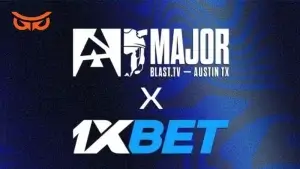League of Legends (LoL) is a multiplayer online battle arena (MOBA) game. Two teams of five compete to destroy each other’s Nexus, located in the middle of the enemy base. Sounds simple on paper, but there’s a lot of depth to it. League of Legends is completely free, which means everyone can jump right into it. That, combined with the game’s easy-to-learn, hard-to-master nature, made League of Legends the biggest esport in the world, with LoL Worlds being the apex of that ecosystem.
Champions and Draft
The game of League starts with everyone picking a champion. Each champion comes with a distinct playstyle and a unique set of abilities. There are marksmen that fire deadly shots from afar, mages that crush their foes with potent spells, and bruisers that battle enemies in close quarters. There is a ton of champions out there, so no matter your playstyle or preferences, chances are you’ll find one that you enjoy.
Some champions work well with each other while others—not so much. In pro play, players select their champions in a certain order in addition to banning away five picks they wouldn’t want their opponents to have. This is called the draft. Drafting a team composition consisting of five powerful champions is a great way to ensure a swift victory.
Abilities and Items
Champions have two ways of getting stronger. The first is done by gaining experience and leveling up. This gives you raw stats and skill points that you can use to unlock new abilities or improve existing ones. At level six, you get access to your ultimate—a singular spell that can alter the flow of the game. It’s worth noting that before the match starts, each player gets to choose two Summoner Spells—non-unique abilities with game-changing effects. For example, the most common one—Flash—is an instant short-ranged teleport that can be used to either finish off fleeing foes or to get out of harm’s way, making it a must on most champions.
The second option is to power up by buying items at your shop. There are many pieces of equipment that offer stat boosts, passive bonuses, or even additional abilities like a spell shield or a brief invulnerability. Buying the right combination of items is key to using your champion to its fullest potential.
Sometimes you might want to get more protection to ensure that you will be the last one standing after a prolonged fight, while in other cases you will sacrifice survivability for increased impact. In the end, everything depends on the ever-changing game flow. And adapting to it is something that even pros can struggle with.
Roles and Responsibilities
When the game starts, each team spawns at its fountain. This is a safe place where you can restore health and mana, and access the above-mentioned shop. You will also end up here after you return to base or respawn.
Once everyone’s ready, they head to one of the three lanes: bot (stands for bottom), mid (stands for middle), or top (stands for… well, top). Each lane has sets of champions that are best suited for it. For example, bot is a duo lane, meaning that it’s shared by two players. One is an AD carry—a ranged damage dealer that relies on items to turn into a teamfighting monster. He’s paired with a support who makes sure that the AD carry stays safe while providing vision and utility for his allies.
Mid and top are solo lanes. Mid lane is the home to mages and flashy assassins that rely on outplays and roams to snowball the game. Top is occupied by duelists and tanky frontliners that form the backbone of the team.
Between the lanes lies jungle—a shrouded area that’s filled with neutral monsters. Slaying them gives gold, experience, and substantial buffs. Epic monsters like Dragon, Rift Herald, and Baron Nashor offer massive benefits, which is why teams will often fight for control over them. The jungler is the player that’s responsible for securing these resources while also looking for opportunities to assist his teammates or kill overextending opponents.
Read also: League of Legends Betting
Turrets, Minions, and Win Conditions
Each lane is a path between two bases that’s guarded by turrets. If you want to reach the enemy Nexus—and win the game—then you first need to destroy these. But that’s easier said than done. Turrets can quickly overpower even the strongest of champions, so you need to stay behind your minions to take them down.
Minions (or creeps) are computer-controlled units that march down lanes. Champions gain experience if creeps die near them, but they can also get gold if they land killing blows on them. This is known as last-hitting. Turrets attack minions first, which makes them essential in sieging the enemy base. Although, if you hit an enemy champion close to a turret, it will switch its focus to you.
Working together with allied minions and other champions to destroy turrets is the main way to win a game of League of Legends. Of course, you also have to fend off enemy champions with their own items and powerful abilities. Taking down an enemy champion is considerably harder than killing a minion and will give you a nice chunk of gold as a reward.
Dying in League of Legend doesn’t come with any negative repercussions, apart from having to wait for your death timer to respawn. During the first few levels, death timers only amount to a few seconds but they increase as the game goes on and champions level up. Killing enemy champions gives you a perfect opportunity to destroy turrets.
So that’s the gist of it. You get gold, buy items, and siege the enemy base all the while battling a team that’s trying to do the same. Some rely on tactics or delicate timings to outmaneuver their opponents and chip away at their defenses. Others prefer to brute force their way to the enemy Nexus. League of Legends offers countless ways to play to your strengths and find victory.
And that’s a big part of what it makes it so popular.
























